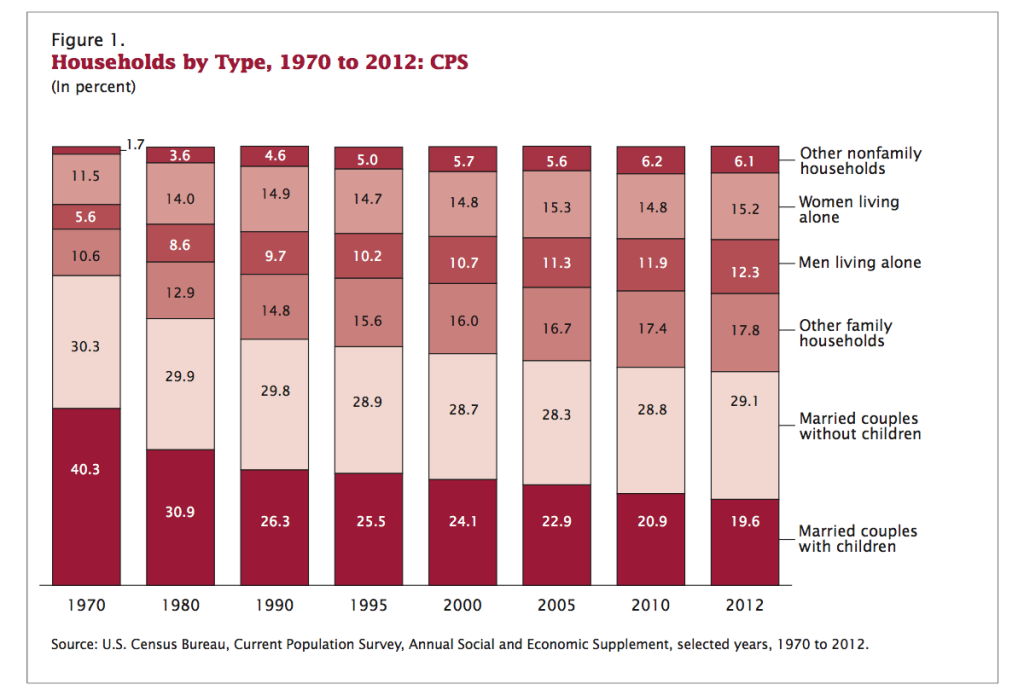CHART OF THE DAY: American Household Trends
Spotted this beauty on the Big Picture site a couple of days ago - a look at how the composition of American households has changed, kind of dramatically, over the last 40+ years.
Have a look:

Of course you spotted the major changes since 1970 - the percentage of households consisting of 'traditional' families, i.e.. married couples with children has fallen by over half.
What has grown pretty significantly over that time, (and for many readers of this blog, and me too is our lifetimes), are 'non-traditional' households and people of both genders who are living alone.
And taking a couple of these household categorizations and combining them we see that in 1970 about 70% of all households included a married couple, but by 2012 that number fell to 49%.
Americans are getting married, (or staying married) less, living alone more, and have by a wide, wide margin moved away from what are now fast becoming antiquated ideas about what the traditional American family and household is.
Why post this kind of data on the blog you might be asking?
I don't know, maybe because I find it interesting, (which is pretty much the only reason anything gets posted on the blog).
And maybe because I do think it is important to think about what is going on at a macro level sometimes as these trends and new realities do impact our organizations, the people we employ, their challenges and needs, and how HR will be done in the future.
What do you think? Does it matter to your organization that America has changed so dramatically in the last few decades?
Happy Thursday.

 Steve
Steve
Reader Comments (3)
It definitely affects what kind of benefits are most attractive. Partner benefits (as opposed to spouse benefits) become more important, for example. Just the other day, my company was talking about how we've started hiring older employees and things like retirement savings and maternity leave are now more important to them than free lunch and happy hour. You have to stay on top of these trends to make sure you keep employees happy.
I agree for sure Cari. Those examples are really excellent ones for sure. Thanks!
Just the other day, my company was talking about how we've started hiring older employees and things like retirement savings and maternity leave are now more important to them than free lunch and happy hour.